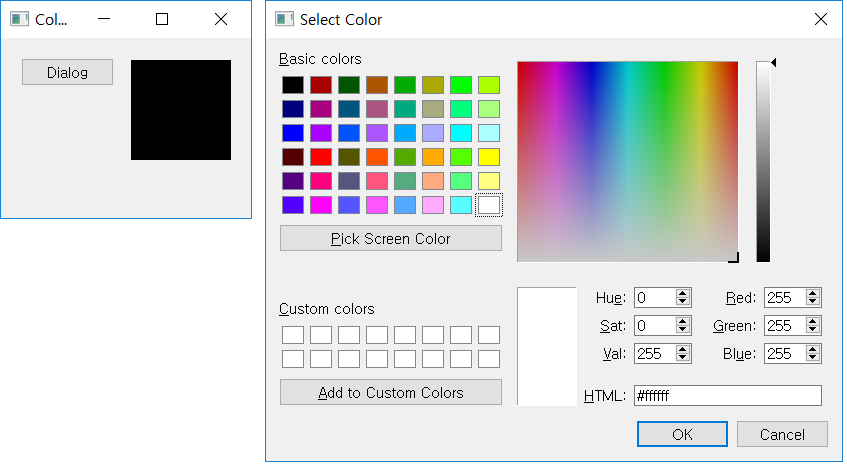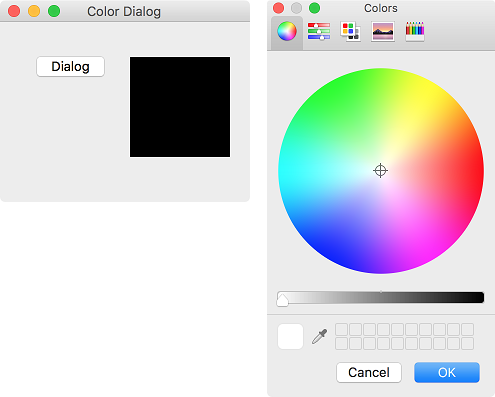QColorDialog¶
QColorDialog is a dialog where you can select the color. ( QColorDialog official document )
Example¶
import sys
from PyQt5.QtWidgets import QApplication, QWidget, QPushButton, QFrame, QColorDialog
from PyQt5.QtGui import QColor
class MyApp(QWidget):
def __init__(self):
super().__init__()
self.initUI()
def initUI(self):
col = QColor(0, 0, 0)
self.btn = QPushButton('Dialog', self)
self.btn.move(30, 30)
self.btn.clicked.connect(self.showDialog)
self.frm = QFrame(self)
self.frm.setStyleSheet('QWidget { background-color: %s }' % col.name())
self.frm.setGeometry(130, 35, 100, 100)
self.setWindowTitle('Color Dialog')
self.setGeometry(300, 300, 250, 180)
self.show()
def showDialog(self):
col = QColorDialog.getColor()
if col.isValid():
self.frm.setStyleSheet('QWidget { background-color: %s }' % col.name())
if __name__ == '__main__':
app = QApplication(sys.argv)
ex = MyApp()
sys.exit(app.exec_())
First, create a push button and a QFrame, and set the background color of the QFrame widget to black.
Use QColorDialog to change the background color.
Description¶
col = QColor(0, 0, 0)
Use QColor to make black for background color.
col = QColorDialog.getColor()
Pop up QColorDialog, and use getColor() method to save the color.
if col.isValid():
self.frm.setStyleSheet('QWidget { background-color: %s }' % col.name())
If you select the color and press the ‘OK’ button, the Boolean value of col.isValid() becomes True; if you press the ‘Cancel’ button, the Boolean value becomes False.
The selected color is set as the background color of the frame.
Prev/Next
Prev : QInputDialog
Next : QFontDialog

